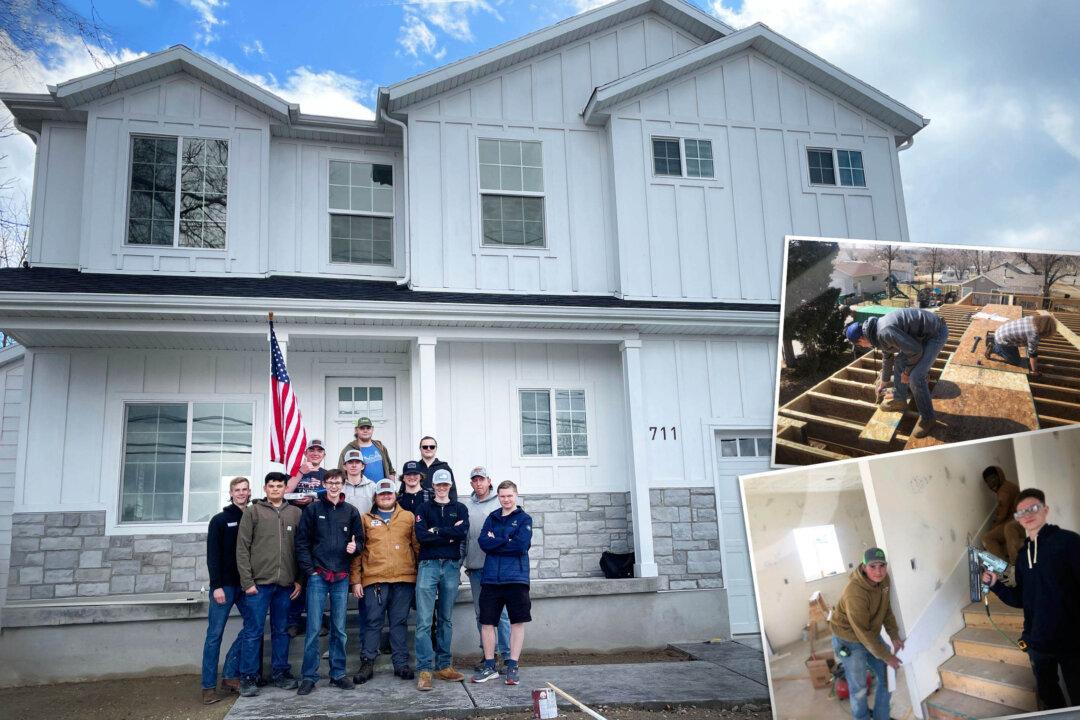For two years on the job site, there had been the swat of hammers, the “psst” of nail guns, and the sounds of laughter—all the racket amounted to young hands building their skills, forming bonds, and working together toward a common goal.
Students from Murray High School in Utah have been building houses for class credit, and soon, a family will begin living in the new full-size home on West Bullion Street.






